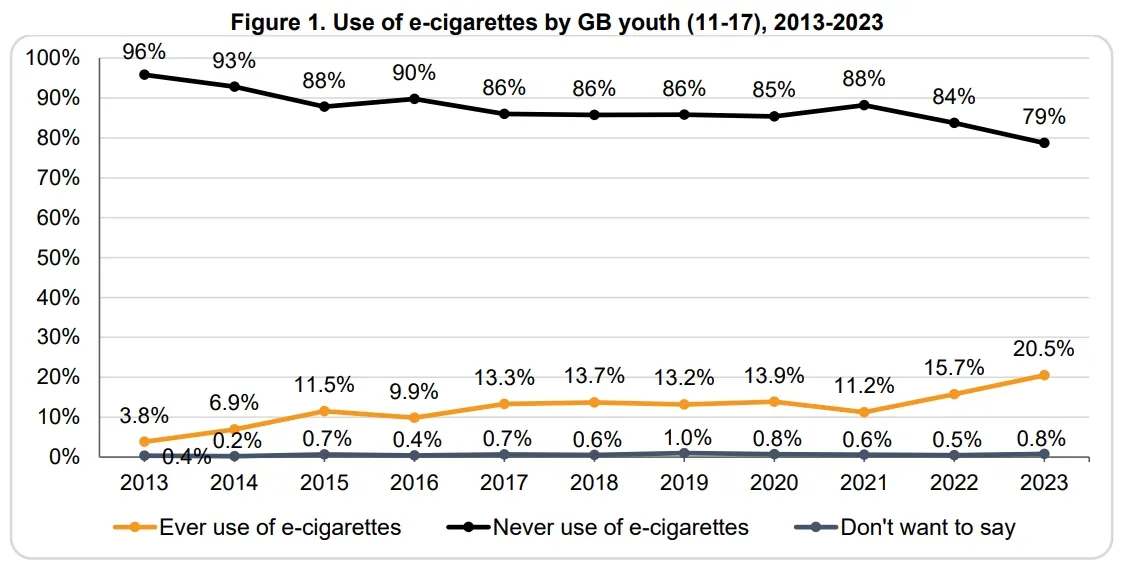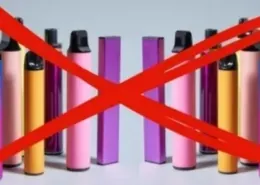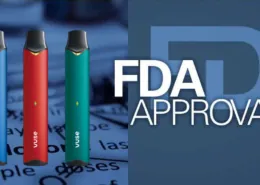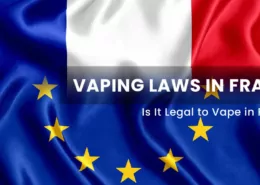Is Vaping Bad for You and How Are the Regulations Evolving?
The rise of e-cigarette and vape usage among adults and young people has paralleled a decline in traditional smoking rates. Recent political initiatives aim to prevent vapes from being marketed to children, fostering a smoke-free generation.
Why Is Vaping Considered Safer Than Smoking?
Cigarettes contain tobacco, tar, and numerous toxic chemicals known to cause cancer, making them the leading preventable cause of illness and death in the UK1. Approximately half of all lifelong smokers die prematurely, losing about 10 years of life on average.
Health authorities urge smokers to quit, and nicotine vapes have emerged as an effective tool for cessation—surpassing nicotine patches and gum2. Research indicates that individuals receiving face-to-face support while using vapes are up to twice as likely to quit smoking compared to those using other methods3.
While vaping isn’t without risks, it’s significantly less harmful than smoking cigarettes4. Therefore, it is recommended exclusively for adult smokers. The NHS supports this approach by encouraging the use of e-cigarettes as a means to quit smoking as part of its “swap to stop” programme..
Is Vaping Bad for Your Health?
Using e-cigarettes or vapes is considerably less harmful than smoking traditional cigarettes. However, health experts agree that non-smokers should not start vaping. Doctors warn that vaping may cause long-term damage to young people’s lungs, hearts, and brains5.
The vapour inhaled from e-cigarettes contains small amounts of chemicals, often including nicotine, an addictive substance. More research is needed to fully understand the health effects of e-cigarettes. The World Health Organization (WHO) has expressed concerns, stating that evidence on their adverse health effects is mounting6.
Illegal vapes pose additional risks, as they are more likely to contain other harmful chemicals or drugs like cannabis.
How Many Adults Use Vapes in UK?
Smoking rates in the UK have fallen to an all-time low, with about 13.3% of adults smoking in 20217. Among young adults aged 18-24, smoking prevalence has significantly decreased over the past decade8.
As smoking declines, vape use has risen sharply, particularly among 16-24-year-olds, where usage rates have increased. In 2021, approximately 3.8 million adults in Great Britain used e-cigarettes. Daily vaping among adults aged 16 and over has seen a steady rise, while occasional use has also increased9.
Research published in 2023 indicated a significant rise in vaping among individuals in England who have never been regular smokers10.
How Many Children Are Vaping in UK?
Despite laws prohibiting the sale of nicotine-containing vapes to under-18s and preventing adults from purchasing them on minors’ behalf, vaping among younger teenagers is growing. According to a 2023 survey by Action on Smoking and Health (ASH), nearly 8.6% of 11-17-year-olds were current vapers, up from 4% in 202011.
The survey found that 20.5% of this age group had tried vaping, with inexpensive, brightly coloured disposable vapes driving the increase from previous years. Vaping is now more common than smoking among children.

How Are Vaping Regulations Changing in UK?
The previous Conservative government announced changes to the rules around vapes as part of its plans to create a smoke-free generation12. These changes included:
- a ban on disposable vapes
- a new tax on vaping products
- marketing restrictions to make vapes less appealing to young people
- increased fines for retailers who sell vapes to under-18s
Although the Conservative Tobacco and Vapes Bill had not become law before the July general election, the Labour government has said it will introduce its own Tobacco and Vapes Bill13. Labour’s policy priorities include introducing a progressive smoking ban, stopping the branding and advertising of vapes to appeal to children, regulating flavours, packaging, and display of vapes and other nicotine products, and giving Trading Standards more power to prevent under-age sales of tobacco and vapes.
The Environmental Impact of Disposable Vapes
Campaigners highlight the environmental hazards posed by disposable vapes. The materials and chemicals used—including lithium batteries—make safe disposal challenging. While vapes can be recycled, research suggests only 17% of vapers do so. An estimated 1.3 million disposable vapes are discarded weekly in the UK, raising significant environmental concerns.

What Are the Vaping Rules in Other Countries?
Countries around the world have implemented various regulations on vaping:
- United States: The Food and Drug Administration (FDA) has prohibited some vape flavours like mint and fruit in particular e-cigarettes to reduce youth appeal. In 2022, the FDA ordered Juul Labs to stop selling its products; however, this decision was later challenged, and the review is ongoing.
- Australia: E-cigarettes containing nicotine are generally available only by prescription for smokers looking to quit tobacco. Pharmacies do not sell disposable vapes.
- New Zealand: New rules introduced in 2021 ban most disposable vapes and target flavours that appeal to children.
- Other Countries: Nations like South Korea, India, and Brazil have implemented strict vaping regulations, while China has announced restrictions. According to the WHO, many countries lack comprehensive laws regulating e-cigarettes.
Also Read:
New Worldwide Vape Regulations in 2024
As the UK government moves forward with its plans to create a smoke-free generation, the debate around vaping and its role in smoking cessation, as well as its potential health risks and environmental impact, continues to evolve.
References
- NHS: Benefits of quitting smoking ↩︎
- Cochrane: Can electronic cigarettes help people stop smoking, and do they have any unwanted effects when used for this purpose? ↩︎
- NHS: Using e-cigarettes to stop smoking ↩︎
- Public health: E-cigarettes around 95% less harmful than tobacco estimates landmark review ↩︎
- BBC: Vapes ‘95% safer’ than cigarettes messaging backfired ↩︎
- World Health Organization – E-cigarettes ↩︎
- Office for National Statistics – Adult Smoking Habits in the UK: 2021 ↩︎
- Office for National Statistics – Adult smoking habits in the UK: 2023 ↩︎
- ONS – E-cigarette Use in Great Britain ↩︎
- The Lancet: Vaping among adults in England who have never regularly smoked: a population-based study, 2016–24 ↩︎
- ASH – Use of E-cigarettes Among Young People in Great Britain ↩︎
- GOV.UK: Disposable vapes banned to protect children’s health ↩︎
- THE KING’S SPEECH 2024: Tobacco and Vapes Bill ↩︎
- Bestselling Vapes in UK After Disposable Ban: What to Stock 2025 - August 8, 2025
- Argentina Debates Stricter Vape Laws Amid Prohibition Failures - August 8, 2025
- Nigeria Advocacy Group Urged to Hike Tobacco & Vape Tax by 100% - August 8, 2025









